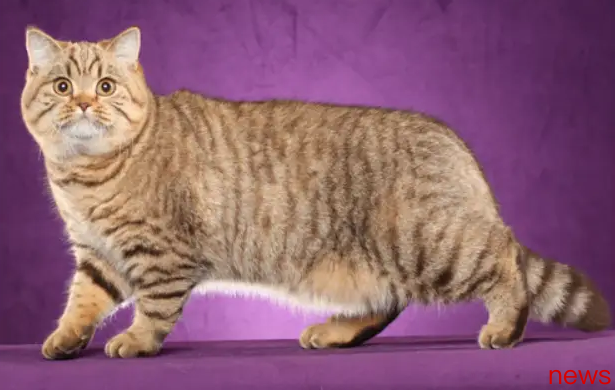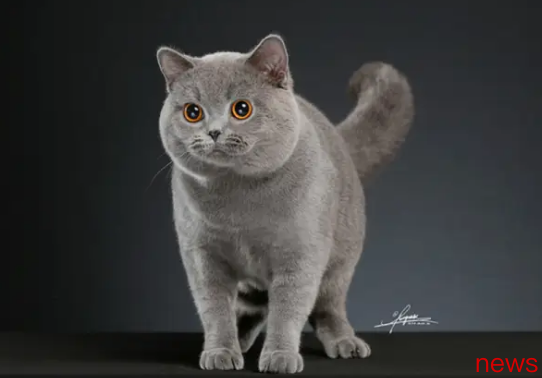When choosing a qualified British short/long-haired cat, you need to consider many aspects, including head characteristics, hair quality, body shape and structure.
When faced with the overwhelming display of cats on a book, a certain sound, or even a certain Taobao, or a certain fish, have you ever been confused by the "match level" and "high-level" descriptions that seem to be very powerful, or are you simply confused about cats with different appearances but all claim to be the same breed?
Starting from this issue, we will combine the breed standards of the four major international breed cat associations (CFA, FIFE, WCF, TICA) and combine the opinions of many senior domestic breed cat breeders to sort out a series of contents about "breed cat selection".

Our goal is to help you avoid the pitfalls of buying breed cats.
The British Shorthair cat is a breed recognized by the four major international breeds of cats. It has a long history and is said to be from Egypt. Later, it followed the army of ancient Rome to the island of England and has reproduced to this day.
Its brother breed, the British long-haired cat, is the product of the Persian cat's long-haired gene after being introduced into Persian descent. All three associations except CFA recognize British long-haired cats. From the perspective of breed standards, the two are basically the same. They can be simply and roughly considered as long-haired versions of British short-haired cats.
In the breed standards of the four international associations, the description of the classic breed of British shorthair cat, a long history, is basically the same - the head is round, the eyes are round, the claws are full, the chin is wide, medium to large, thick and powerful, the hairs are thick and the elasticity is good after touching, the tail should not be too long, the tail hair is thick and the tail tip should be round.
British long-haired cats are also recognized by international associations except CFA.
cites the description of CFA: "A good British shorthair cat requires a compact overall, symmetrical and powerful proportions, showing good body depth, wide chest, short to medium-strong legs, round claws, thick tail roots and round tail tips. A round head, moderate width between the ears, round cheeks, strong chin, medium-sized ears, large round eyes, well opened, and medium-wide nose. The coat is short and very dense. Female may be slightly weak in all characteristics, while males have larger jaws. The breed matures slowly."

Naturally, there will be some slight differences in the specific standards of each association. For example, the length of the tail is enough. CFA believes that it is enough to be in a suitable ratio with the body. WCF requires that the tail is the best to reach the shoulders, while TICA believes that it is only 2/3 of the body length. In addition, there are some differences in the recognition of specific colors among each association. For specific details, you can refer to the standard descriptions of each association.
British shorthair cats are late-mature cats that usually complete development only when they are two or even three years old. Therefore, many breeders will wait until the cat is established and even get the competition results before deciding to introduce it. However, there are also bold breeders who will make decisions to introduce it when the cat is young based on the situation of the cat's previous generations.
The British shorthair cats are also recognized by four associations, including solid colors, tabby, double-color, gradual color (shadow color), etc.
The most classic British shorthair cat is only blue. In terms of body shape, appearance, thick hair, etc., blue British shorthair performs best. Therefore, looking at the champion cats of various associations, you can see basically all blue British shorthair cats.
But in our domestic market, the blue British shorthair cat is not as popular as the golden layer. In recent years, purple, cinnamon, etc. have also begun to be sought after in the breeding circle. However, it should be noted that cats with lighter colors such as purple and cinnamon, while their body shape, hair, etc., will also perform poorly due to gene suppression.
Common genetic diseases and some color genes of British shorthair cats have been scientifically verified. Breeding people can also do genetic testing before introducing breeding cats to eliminate the diseased genes and screen out cats that are potentially carried by cats.
We consulted some breeders who participated in these international association events in the past. According to their experience in the competition, the referees of
CFA will pay more attention to the ratios of short head, body, tail, legs, and chest width of English. On the basis of the appropriate proportion, the larger the body, the more developed the muscles, the higher the score, but therefore there will be no particularly large champions, usually around 7kg. The high-grade English short hairs are almost upright and very thick, so they will not mess up the hair no matter how they are rubbed.
WCF and FIFE attach great importance to body shape, and the proportion is not very important in comparison. Therefore, large British shorts are more popular in European arenas, with many big cats weighing more than 10kg.
There are currently no clear distinction between domestic cat competition organizations in these aspects, and the breed standards are basically the same as those of the four major international associations.
For a pet cat, the primary condition for choosing a cat is health.
After ensuring that no congenital diseases, infectious diseases, or viruses are carried out, hidden dangers can also be detected through genetic testing. Currently, there are three common genetic diseases known to British shorthair cats: polycystic kidney disease, progressive retinal atrophy and autoimmune lymphocytic hyperplasia syndrome. They can all be detected through genetic testing. It can be seen that "Jinjian and Yingchang are so popular, how can we avoid catching kittens with pathogenic genes? 》. In addition, HCM (hypertrophic heart disease) is also common and can be checked during physical examination.
Secondly, if there are requirements for the appearance of the cat and if you hope to raise "purebred" English short (long) you can refer to the previous summary of the breed standards and appropriately relax the standards to choose.
But there are some obvious differences, such as not round eyes but almond eyes, such as petite or slender figure, such as short noses and broken noses mentioned earlier, these are all cats that obviously violate the breed standards, and they are likely to be mixed with other breeds, so it is best to avoid it.. By the way, there are also those "English short" and "short legs" with short legs, which are also mixed cats with serious health risks, and are not recommended to keep them at all.
The editor personally reminds: Don’t be superstitious about "high-level" and "level". Many cathouses will mark all cats that have participated in the competition as "level", and those who have won some results will be marked as "level". In fact, in recent years, prize money and results have become increasingly rampant, and cannot be used as an effective measure.
If possible, go to the cathouse directly and take a look. It is a more effective way to choose the cathouse environment and the cat's parents. Regular cathouses are not sold when cats are very young, whether as pet cats or breeding cats. Generally, they will eliminate these kittens after they grow to the point of not being matched, and usually after they are 3, 4 months or even half a year old, and sell them as pet cats after being sterilized. Remember, pet cats for regular cathouses are sold only after three shots of vaccines and sterilization. There will definitely be no unsterilized cats sold as pets!